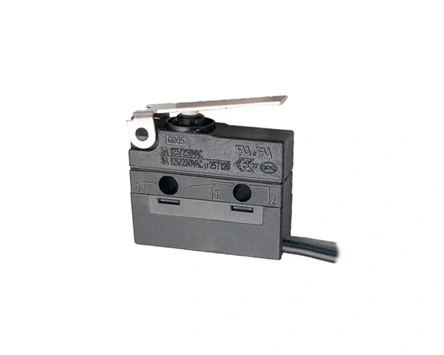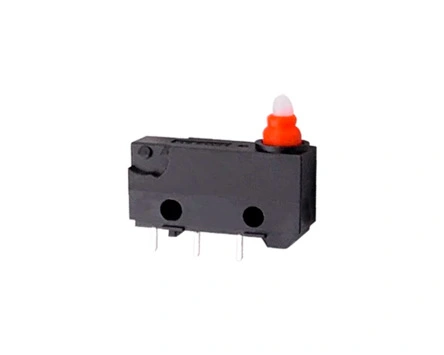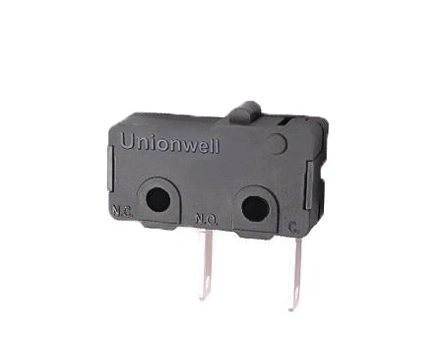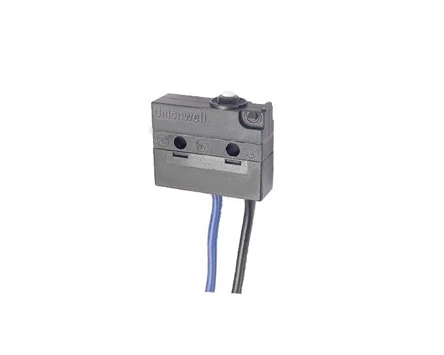
Since its introduction in the 1930s, micro switches, as small electromechanical switches, have evolved to meet a variety of application requirements, including aerospace, home appliances, boiler controls, medical equipment, sprinkler systems, testing Equipment, timers, and vending machines, etc. Micro switches are commonly used to detect temperature, position, and liquid level.
There are many micro switches types, the following 5 elements can help you choose the micro switch suitable for your specific application.
Size matters when choosing a micro switch. Switch size is directly related to its characteristics, including current range, travel, and operating force. For example, one of the smallest micro switches on the market today measures 0.50" x 0.236" x 0.197" (LxWxH). While this tiny switch is suitable for detecting circuit conditions in compact circuit breakers, it typically only interrupts 0.1 to 3 amperes (A) and has a short journey.
Applications that require higher currents typically require larger switches. For example, in the fuel tank application of the micro switch, the micro switch used to detect the liquid level needs to be able to provide a large stroke and withstand a large current. Usually, in liquid-level switch applications, the switch directly drives the water pump and carries a large current. This requires a large micro switch rated at 20A or 25A at 125VAC or 250VAC.
Tip: The smaller the switch size, the smaller the stroke and the current that can be broken.
Micro switches for sale are usually capable of breaking currents from 5mA/5VDC to 25A/250VAC. The Micro Switch product line offers a range of products from low energy consumption to power load electrical types for a variety of applications. Engineers must know the current and voltage ratings (AC or DC) required for a specific application to select the appropriate switch. As devices of all kinds in all industries strive for low power consumption, micro switches must be able to operate at low currents (logic level loads) and DC voltages.
Environmental requirements have a great influence on the selection of micro switches, especially in applications requiring high reliability and criticality such as industrial control and medical equipment. Understand the environmental conditions of the application, including contaminants in the air that may enter the switch, the liquid in which the switch is located, and operating temperature requirements. Applications in harsh environmental conditions require the selection of sealed switches with a wide operating temperature range. The highly reliable microswitches operate from -65 degrees Fahrenheit (-54 degrees Celsius) to 350 degrees Fahrenheit (177 degrees Celsius), making them easy to handle in a variety of applications. At the same time, it should also be noted that the protection level of the switch should be at least IP67 to prevent liquid intrusion. This eliminates the need to spend a lot of time designing an enclosure that achieves the same degree of protection.
Switch reliability is critical, and it is important to know how many electrical and mechanical operating lifetimes an application will require. Different switches have different contact materials, housings, and terminals to meet the electrical and mechanical life requirements of different applications. A highly reliable micro switch by professional micro switch manufacturers can operate 10 million to 20 million times before mechanical failure, and 50,000 to 100,000 times under maximum load before electrical failure.
Choosing micro switch in China that meet various international electrical requirements can help you simplify product design for different regions. Some major standard certifications include UL certification in the United States, cUL certification or CSA certification in Canada, ENEC certification in Europe, and CQC certification in China.
 English
English  français
français  Deutsch
Deutsch  Español
Español  italiano
italiano  português
português  tiếng việt
tiếng việt  Türkçe
Türkçe  slovenský
slovenský  slovenčina
slovenčina  беларускі
беларускі 


